Table of contents
- What does DNA look like?
- What is DNA made of?
- Where is DNA found in a cell?
- Defining what DNA stands for: the Double helix
- Do all living things have DNA?
- What exactly does DNA do?
- The genetic code
- Interesting facts about DNA and what it stands for
- FAQ for What does DNA stand for?
- Get a reading of your DNA today!
DNA stands for “deoxyribonucleic acid,” and it is one of the most fascinating things you ever saw. Perhaps you remember it from school, but do you remember everything there is to it? This hard-to-pronounce name comes from its structure, a sugar (deoxyribose) and phosphate backbone (acid) with units called bases sticking out from it located in the cell’s nucleus.
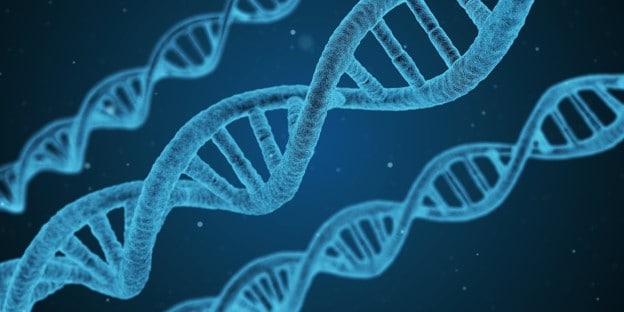
DNA is the chemical molecule that carries genetic information in all living things. It is passed on from one generation to the next and holds the key to our survival on the planet. Almost every single one of the cells in the body contains an exact copy of DNA. This is due to a characteristic that sets it apart from any other molecule: the ability to copy itself.
In 1869, Friedrich Miescher was the first scientist to isolate nucleic acid. By 1952, it was confirmed that DNA is the molecule responsible for the passing of genetic information. Since then, scientists have engaged in an authentic race into knowing more about it. This has led to remarkable discoveries and so many practical uses, especially in the medical field. You have probably heard stuff about cloning or the production of insulin in a lab. All of that and so much more stem from our understanding of this structure.
What does DNA look like?
But what does it look like?
As you have seen in many images, including the one above, DNA looks like a twisted ladder. The “rungs” of a DNA molecule stand for small chemical bases: adenine (A), thymine (T), cytosine (C), and guanine (G). The “side rails” are composed of units called nucleotides, which are made of two substances: a phosphate group and a sugar.
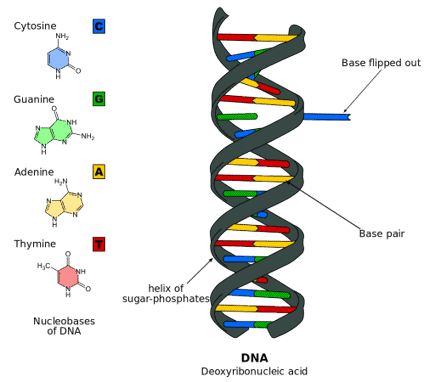
Erwin Chargoff discovered in 1949 that even though different organisms have different amounts of DNA, the amount of adenine was always the same as thymine, and the amount of cytosine was always the same as guanine. This led to the conclusion that the ladder is composed of only A-T and C-G runs, called complementary bases, positioned in specific sequences that codify for particular characteristics.
But let’s take a closer look at this fascinating and unique molecule to understand why it is so fundamental to the perpetuation of life.
What is DNA made of?
This molecule’s chemical composition can be split into three major structural parts: a phosphate group, a deoxyribose sugar, and a nitrogenous base.
DNA is a polymer made of units called nucleotides. These nucleotides are joined together in rows through the chemical bond between the phosphate group of one and the deoxyribose sugar of the next and so on.
The two “railways” or “backbones” are joined together through weak hydrogen bonds between the nitrogenous bases (adenine and thymine; cytosine and guanine).
DNA stands for deoxyribose and acid: The “backbone” of DNA
This is like the “boring” part of DNA since it is a repetitive sequence, one after the other. Here we find the acidic phosphate group of one nucleotide bonded to the deoxyribose sugar of the next to form a long line of nucleotides.
DNA stands for nucleotides: The four bases of DNA
You can think of these as the exciting part of DNA. The nitrogen or nitrogenous bases make up the “letters” of your genome. The adenine from one strand bonds with the thymine of the other and the cytosine with guanine, creating an A-T and C-G order particular to each organism. Together with a deoxyribose and phosphate of the backbone, a nitrogenous base pair forms a nucleotide – the monomer of the large nucleic acid polymer.
| Changes in these bases are classified as genetic mutations, many of which are hallmarks to increased or decreased risks of certain diseases or conditions. Get your DNA sequenced today! |
Now that you know that DNA stands for deoxyribonucleic acid, have you ever wondered why it is classified as an acid? That’s because it is!
Does the word phosphate remind you of phosphoric acid? The acidity of DNA comes from this phosphate group.
An acid is defined as a substance that releases protons. Phosphoric acid (H3PO4), for instance, releases three protons. The only difference between phosphoric acid and the phosphate group is the replacement of two protons with protons from the sugar molecule of the nucleotide. The remaining proton is what makes the entire molecule acidic.
Where is DNA found in a cell?
Typically, genetic material is found in the cell’s nucleus, where it never leaves. However, a small amount of DNA can also be found in the mitochondria (mitochondrial DNA).
This DNA is cut in segments tightly coiled in the nucleus into structures called chromosomes. In humans, DNA is stored in 23 pairs of chromosomes (46 in total). This means that all the cells in your body contain this number of chromosomes packed inside the nucleus. This number varies among organisms. Corn, for example, has 20 chromosomes total in each cell, while dogs have 78.
Your sex cells (sperms in males and ovules in females) contain only half that number of chromosomes, which, when combined with your couple’s sex cell, will create an entire being with the complete set of 46.
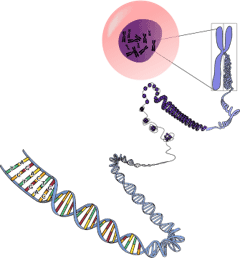
Defining what DNA stands for: the Double helix
In its physical composition, DNA has the shape of a ladder that naturally coils into the famous double helix shape due to its weight and structure.
The Merriam-Webster dictionary defines a double helix as “a helix or spiral consisting of two strands in the surface of a cylinder that coil around its axis.” This definition applies especially to the structural arrangement of DNA.
The term was popularized by the 1968 book by James Watson (one of the discoverers of the DNA structure) titled The Double Helix: A Personal Account of the Discovery of the Structure of DNA.
James Watson and Francis Crick discovered this model of DNA in 1953, upon the grounds of the work of Rosalind Franklin, an X-ray crystallographer who took an X-ray diffraction photo of a DNA molecule. Then, aided by the work of other remarkable scientists, Watson and Crick were able to construct what we now know as the nucleic acid double helix.
Do all living things have DNA?
Fortunately for us, all living things have DNA since they all need instructions on building their anatomies, configure their physiology, and pass on these instructions to their offspring. Even microscopic organisms such as some viruses have DNA.
All living organisms store their hereditary information in the form of DNA. This information includes all the instructions for every genetic trait, from skin color to blood type; it is stored in DNA segments. These segments are what we call genes.
So, what is the difference between your DNA and the DNA found in a carrot, for example? The difference is the sequence of DNA base pairs A, T, C, and G. Think of it as the English alphabet letters. You can create two different stories with the same 26 letters.
The order or sequence of base pairs (A-T and C-G) varies from one organism to another. This sequence determines the instructions to produce insulin in humans and chlorophyll in plants, for example. A human’s DNA does not have the sequence that instructs chlorophyll production, and a plant’s DNA lacks the instructions for insulin.
But, if all cells in the human body have an exact copy of DNA, what is the difference between a bone cell and a skin cell, for example? That has to do with gene expression. Both cells activate the genes required for basic living processes, but only skin cells express the genes for skin proteins. So bone (and other) genes are silenced in this case.
You just saw how DNA has the same letters for all organisms. What is even more impressive is that the language of DNA is the same for all forms of life. Thus, a gene from an organism can be copied, transferred, and translated by any other living organism to produce the same protein.
Insulin is now created by a microbe that has been engineered with instructions from human DNA to produce human insulin. In other words, a copy of human genes for insulin production is copied and transferred to these microbes. These organisms have no blood or blood sugar, but they will produce insulin as they read the recipe to do so, even if they have no use for it.
What exactly does DNA do?
Remember, DNA stands for deoxyribose nucleic acid and is the repository of all bacteria, plant, and animal hereditary information. In any organism, every cell has the same base sequence as every other cell in that living organism.
Three distinct processes encompass DNA’s job to all organisms. These are replication, transcription, and translation.
It makes a copy of itself
Every cell in your body will divide through a process called mitosis. During this cell division, DNA copies itself via the process of replication.
So, how does DNA make a copy of itself?
Through a complex process involving enzymes, DNA uncoils into two single strands. Free nucleotides in the nucleus are bonded to each strand, complementing them and creating two exact copies.
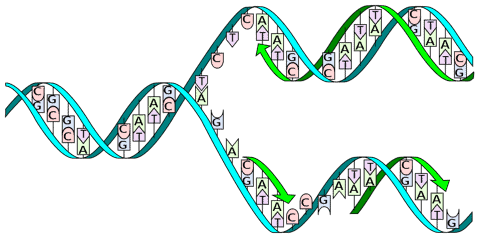
DNA is the only molecule known to do this.
It sends blueprints to the cell to manufacture proteins
We mentioned earlier that DNA never exits the nucleus. So, what tells your cells what to do? This is where the process of transcription comes in. Through this process, DNA will create a blueprint that does exit the cell. This copy is known as RNA.
Transcription is an essential process to life as it sends the information out for cells to carry out their operations and manufacture large molecules called proteins, the building blocks of organisms. The process involves the uncoiling of DNA through specialized enzymes. Free nucleotides complement one of the strands, creating a unique strand (RNA) that acts as a blueprint that will exit the nucleus.
Many transcribed genes contain instructions for manufacturing proteins. This RNA will be read through the process of translation.
The genetic code
If you put together the words r, e, a, and d, you will get a grapheme that is “translated” into a sound; in this case, the word read. Similarly, a set of three consecutive nitrogenous bases are translated into a particular unit called an amino acid. Many amino acids put together form a protein.
This set of rules that determines what a gene in a DNA section stands for what amino acid is known as the genetic code. Simply put, the genetic code is used by living cells to translate encoded genetic information into proteins.
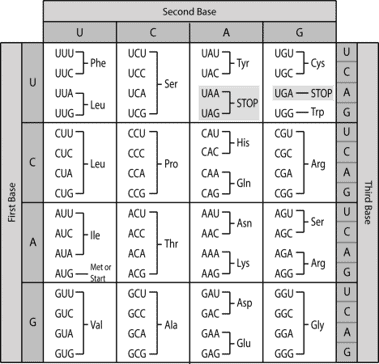
Just like in school you played games where you had to discover a secret message using a code, living cells will use this code to translate a “message” into actionable proteins.
Interesting facts about DNA and what it stands for
- The human genome has an approximate 3 billion base pairs. Out of all these, we share more than 99.9%. This means that less than 0.1% is what makes every one of us unique. Humans share the same anatomy and physiology; it is the slight variations that make us look different from the rest. Identical twins share 100% of their DNA.
- Genes are short sections of DNA that codify for proteins. The human genome contains about 20,000 genes. This comprises only 1.2% of the total genome. The rest of DNA used to be known as junk DNA until scientists continue to discover that it has some functions.
- Paternity DNA tests compare the DNA sequence between a child and a father.
- The genetic similarity between a human and a chimpanzee is more than 90%. Between humans and chickens, it is 60%.
- In 2012, Scientists at the University of Leicester printed the entire human genome into 130 book volumes that would take 95 years to read at a rate of one letter per second.
- Before 1943, it was believed that proteins stored genetic information.
FAQ for What does DNA stand for?
How long is a DNA strand?
If you could uncoil the DNA in your chromosomes and stretch it out, it would be about 2 m (6 ft) long. Considering an estimated 37.2 trillion cells in your body, if you could put together every strand, the distance would be the equivalent of 96,000 round trips to the moon.
What are genes?
Genes are sections of DNA that codify for a protein. There are 20,000 of them in human DNA, which accounts for only 1.2%. The rest is noncoding DNA which scientists are only recently discovering has certain functions, like helping organize DNA in the nucleus and turning on and off gene expression.
Do all cells have the same DNA?
Yes, all living organisms have the same DNA but with different instructions among species.
What does DNA look like under a microscope?
You probably saw a project at a science fair called “DNA extraction.” In this case, DNA cells looked like strands of white noodles. But under a microscope, you can see the double-helix structure.
What is the difference between DNA and genes?
DNA is the molecule, and genes are sections of DNA. Take a look at the illustration below.
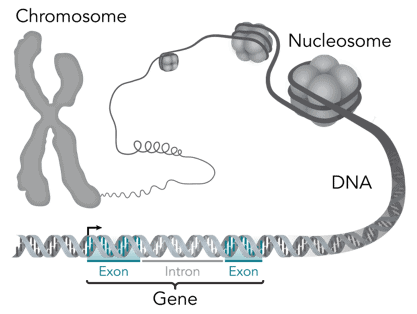
What is the difference between DNA and chromosome?
Chromosomes are packed bundles of DNA inside the nucleus. Every species has a distinct number of chromosomes in its cells.
What is the relationship between DNA bases and traits?
Traits in an organism are determined by the sequence of DNA bases.
Do all humans have the same DNA?
Yes, we do. In fact, we share about 99.8% of our DNA sequence.
Can a DNA test reveal if I have European ancestry?
Yes, a DNA test can reveal if you are more British than your brother, for example, by observing your DNA variations and comparing them to certain populations.
Get a reading of your DNA today!
DNA stands for deoxyribosenucleaic acid. There is a lot to DNA that we have been able to understand through the years. Your genome can reveal the genetic composition of your potential children or if your gene instructions make you more susceptible to a certain type of cancer. Through DNA, you can even find those ancestors you thought were lost.
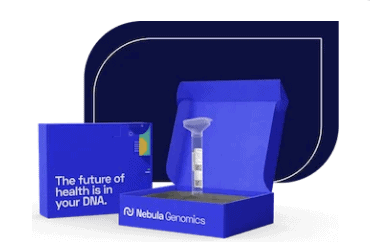
In Nebula Genomics, we decrypt your entire DNA to provide you with the most comprehensive information of your genome. Imagine the whole new world that will unfold before your eyes! Our 30x Whole Genome Sequencing guarantees complete information on your genetic composition. Order your DNA test today!
Edited by Christina Swords, PhD
Want more information on DNA? Check out these other articles:
- The DNA Model: A History of the People and Science of the Double Helix
